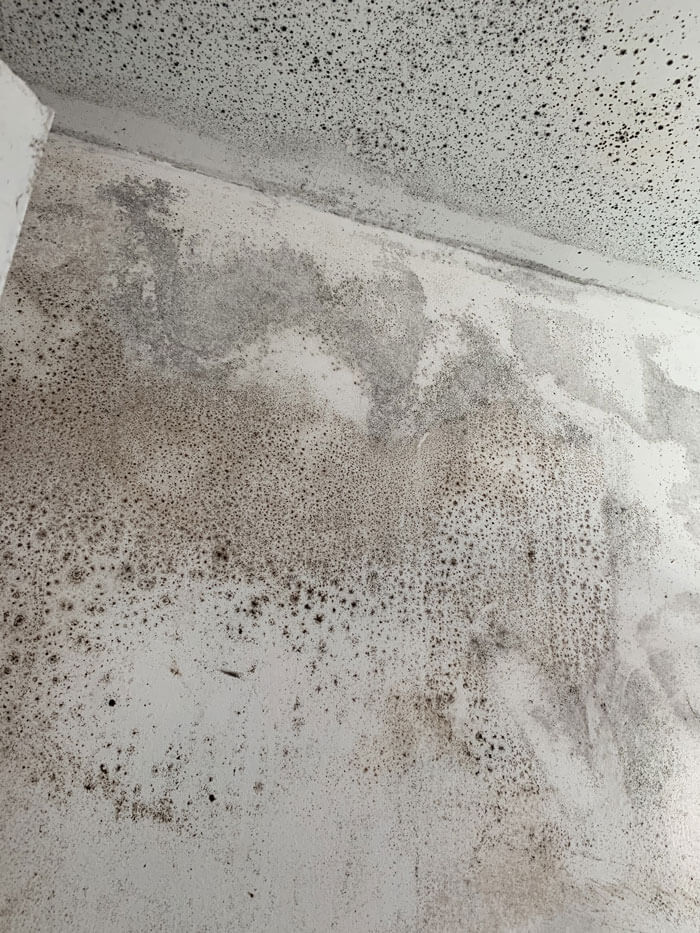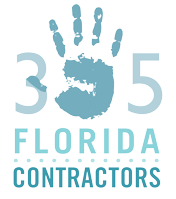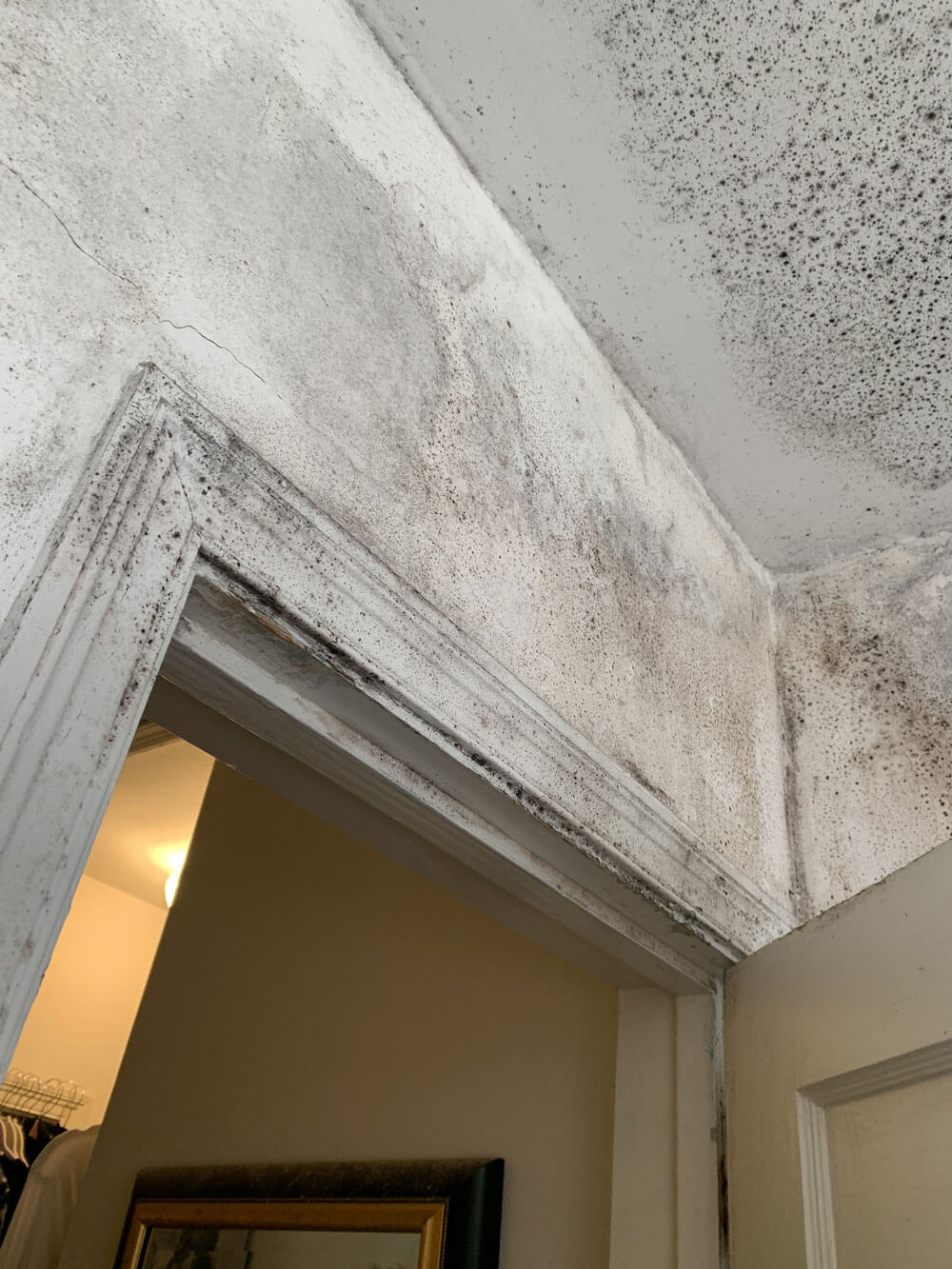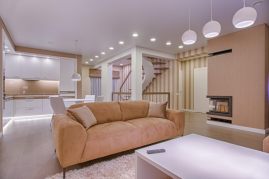Mold thrives indark, warm, damp environments. Sometimes it’s visible—like green, gray, or black speckles or spots on a ceiling or wall—but mold can also hide within walls or inside cabinets. It’s often mold’s distinctive musty odor that alerts homeowners to its presence.
Leaky roofs, cracked foundations, faulty water pipes and plumbing fixtures, condensation, flooding, and poor drainage are all common causes of mold. When water seeps into drywall, it is quickly absorbed, making your ceiling or wall a haven for mold.
If you suspect you have mold in your home, but aren’t quite sure what it is, there is a simple test you can try, assuming you can reach the area: Carefully apply a drop or two of diluted bleach to the surface. If it’s mold, the color will lighten within a minute or so.
Health issues caused by mold
There are several different types of mold, all of which can cause allergic reactions and respiratory issues, including:
- Coughing
- Sneezing
- Wheezing
- Itchy, watery eyes
- Irritation of mucous membranes in nose and throat
- Headaches
- Fatigue
- Skin rashes
Exposure to mold is especially hazardous to people with health conditions like asthma, COPD, cystic fibrosis, severe allergies, and compromised immune systems. Even pets can experience allergic reactions.
Black mold (stachybotryschartarum) is the most toxic type of mold, and it is especially fond of damp or water-damaged drywall and other cellulose-rich construction materials. Professional mold remediation is recommended for black mold.

Getting rid of mold
While black mold should be treated by professionals, homeowners can remove many types of surface moldwith commercial cleaning products that target mold, or with a homemade cleaning solution of one cup of bleach per gallon of water. Bleach is an irritant, so if you make your own cleaner, be sure to wear rubber gloves, safety glasses, and have good ventilationbefore spraying or brushing the mixture onto the moldy surface and letting it dry.
Because mold is persistent, it can be especially difficult to eradicate in porous materials, including drywall. If you don’t kill it all the first time, mold can grow back. That’s why replacing mold-damaged materials may be the most effective long-term option.
If you hire a mold remediation or abatement company, remember their top priority is eliminating mold, and the fastest and most effective way to do that is often to remove the damaged materials along with the mold.
The mold is gone, what happens next?
Cleaning mold or even replacing the drywall won’t do much long if the underlying cause hasn’t been addressed—leaks, broken pipes, or other drainage issues must be repaired before the drywall is replaced, or the mold will return. If you’re unsure where the moisture is coming from, it’s a good idea to hire a construction professional who can make any necessary repairs so the new gypsum isn’t just covering up a bigger issue.
Hiring a professional to replace the damaged drywall makes sense for large jobs, but it’s also a good idea for smaller jobs in hard-to-reach areas.
Even better, experts in drywall installation are so skilled that when they’re done you won’t be able to see any tape lines or uneven joint compound, so you’ll never know where the old gypsum ends and the new drywall begins.
Preventing mold
Because mold thrives in damp, warm environments, there are several things you can do to prevent it from taking up residence at your home.
- Inspect interior and exterior pipes and plumbing fixtures for leaks, and make any needed repairs
- Clean gutters and downspouts so rainwater flows freely out and away from your home
- Repair any cracks or holes in the foundation
- Check the roof and flashing around skylights, windowsm, and chimneys for potential leaks, and repair as necessary
- Provide proper ventilation, especially in bathrooms, kitchens, and attics
- Use air conditioners or dehumidifiers to control indoor humidity levels (the Centers for Disease Control and Prevention suggests indoor humidity levels be no more than 50%)
- Consider using moisture-absorption products in closets, basements, or other damp spaces
- Add mold-inhibitor to paint when painting areas that may be prone to mold, like bathrooms, kitchens, or basements
If your walls or ceilings have been damaged by mold and you want to start fresh, contact us. We’d be glad to discuss options for replacing some or all of the affected drywall.





